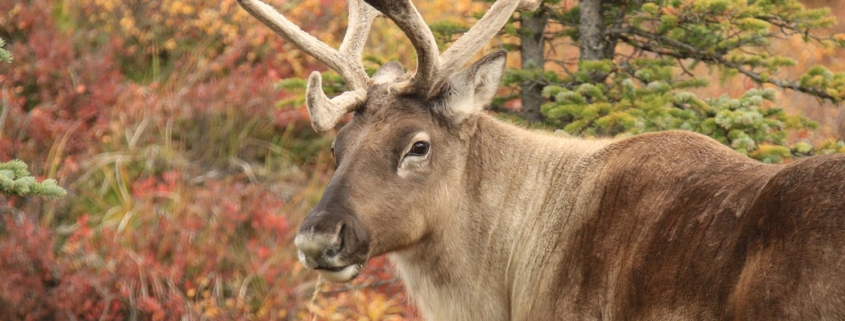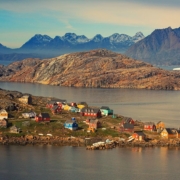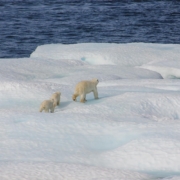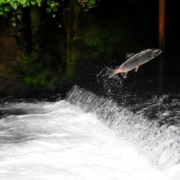Indigenous-led Conservation of Caribou
Indigenous-led efforts to conserve caribou, highlight efforts to sustain cultural and ecological connections among First Nations and endangered species. According to a 2013 report by the Assembly of First Nations and the David Suzuki Institute, in Canada, “boreal woodland caribou herds share the land with approximately 300 First Nation communities.” Both boreal caribou and Southern Mountain caribou, in British Columbia, Canada, are listed as “threatened” under the Species at Risk Act (SARA).
Caribou contribute to the lives and cultures of Indigenous Peoples across Turtle Island (the continent of North America). For example, caribou is a traditional food among the Inuit and the parts of the caribou that are not eaten, such as the skin and fur, are transformed into material for tents, clothing, and bedding. The hunting and harvest of caribou play social and spiritual roles in maintaining kinship and community relationships.
Indigenous led-conservations efforts are saving caribou from local extinction (also referred to as extirpation), thus contributing to the protection of Indigenous self-determination. For example, the size of the Klinse-Za caribou herds (one of 54 subpopulations of caribou in British Columbia) on the traditional territories of the West Moberly First Nations and the Salteau First Nations, have declined from approximately “250 in the 1990s to only 38 in 2013.” However, about nine years of conservation efforts by these First Nations have increased the size of the herd to 101 caribou in 2021, and more recently, to 114 caribou . The increase in the numbers of caribou, is attributed to the leadership and conservation actions undertaken through a conservation partnership agreement between West Moberly First Nation and the Salteau First Nation. The partnership agreement provides habitat protection for the Klinse-Za and for other caribou subpopulations in neighbouring areas. In addition, the agreement aims to “stabilize and expeditiously grow the population” to self-sustaining levels and to maintain consistency between traditional caribou hunting practices and harvesting practices and Aboriginal and Treaty rights. The conservation agreement also invites the reinstatement of cultural traditions of caribou hunting.
The degradation of caribou habitats has contributed to the steep decline of caribou in British Columbia as well as in other parts of Canada. For example, in Northern Québec and Labrador, the George River caribou herd has declined by 98% since 2001. Although the numbers of caribou in the herd went up slightly in 2020, they went down again in 2022, and while non-Indigenous people are banned from hunting the caribou, the Innu and Cree Nations are also taking measures to curb hunting. On January 24, 2022, the Cree Nation of Eeyou Istchee and Innu Nation of Québec jointly signed the Maamuu nisituhtimuwin/ Matinueu-mashinaikan atik u e uauinakanit or mutual understanding, that “establishes mutually agreed upon terms by which Innu communities in Québec will be able to access caribou within the Cree traditional territory of Chisasibi, Eeyou Istchee.”
Indigenous-led caribou conservation protects not only the caribou, but also Indigenous ways of living with the land, and “maintaining balance” between Indigenous cultures and biodiverse ecosystems.
By Leela Viswanathan
(Image Credit: Orna Wachman, Pixabay)







 Drew Farwell (Unsplash)
Drew Farwell (Unsplash)

